And that’s no Bologna ..
Car returned to Prato with ourselves and it in one piece. It’ll be missed. Decided to walk to the train station, but given the day had turned quite warm, it probably wasn’t the best choice <grin> … but the train trip was uneventful. We arrived in Bologna … crammed ourselves onto a number 25 bus … and got off precisely 3 stops later. Across the road, down a laneway and there was number 11 … but no-one was there to let us in. Conveniently there was a Tabacchi/coffee shop underneath so we perched ourselves on high bar stools outside, enjoyed a macchiato and waited 15 minutes for (we still don’t know his name) … a friend of the owner to arrive and show us around. He only spoke French and Italian … but a three language discussion worked brilliantly, and we were in. And what a place! Massive 10 foot doors onto the street needed two hands to push just one of them open … the apartment (third floor) surrounded three sides of the central courtyard (like a horseshoe) with it’s own garden patio off one of the bedrooms. This is obviously the owner’s place (I think she travels a lot) … there’s a little loft above the sitting/office area … a long kitchen/dining area … two bedrooms and a bathroom/laundry. It’s wonderfully light … comfortable … lived in … tons of pictures, books and ‘stuff’ to make you feel totally at home. And that patio for morning coffee or to dry washing … surrounded by geraniums, greenery and pots of oregano, mint, sage, chives and thyme. <sigh>
Although Bologna is a big city, it’s often overlooked as a tourist destination … known more for it’s university (oldest continuous one in the world), food and music culture … although one feature makes it different from any place we’ve visited — the porticos. Every street has vaulted, wide covered sidewalks protecting pedestrians from sun or rain … the design of archway or ceiling changing in front of each building — as many as 3 or 4 different styles of porticos in a block. Both elegant and practical, for sidewalk cafes too, there are 38 km of them throughout the old city.
We’ve often found that taking one of the tour buses when first arriving in a city provides great orientation … pinpointing places of interest to revisit later. This one was particularly good … the earphones worked (!) and the information was well presented. Bologna is the birthplace of at least four Popes, multiple mathematicians, scientists and artists … Guglielmo Marconi and Luigi Galvani (of wireless and galvanization fame) .. but more importantly it’s the home of lasagna, ragu al tagliatelle (spaghetti bolognaise), and mortadella … a million miles away from what is referred to as ‘bologna’. All of which we can attest as being delicious. The ragu is much less tomatoey than the version we’re accustomed to in N. America … meaty, velvety … almost creamy, and served over wider tagliatelle noodles.
Just steps away from our location there’s a fabulous market place in one direction … in another, the Piazza Maggiore with San Petronio Basillica – the 5th or 6th largest church in the world, and still not finished despite being started in 1390. The city’s signature Two Towers, dozens of museums and hundreds of renowned eateries all within strolling distance. If only you could have sampled with us the the Bologna-style ‘tapas’ from the fish market restaurant … shrimp with crispy noodles drizzled with sweet chili sauce … perfectly seared bluefin tuna with carponata (slow cooked vegetables) … filets of sardines, lightly fried and still sizzling … Queen scallop au gratin … and tuna, aubergine, mint fish balls with tatziki.
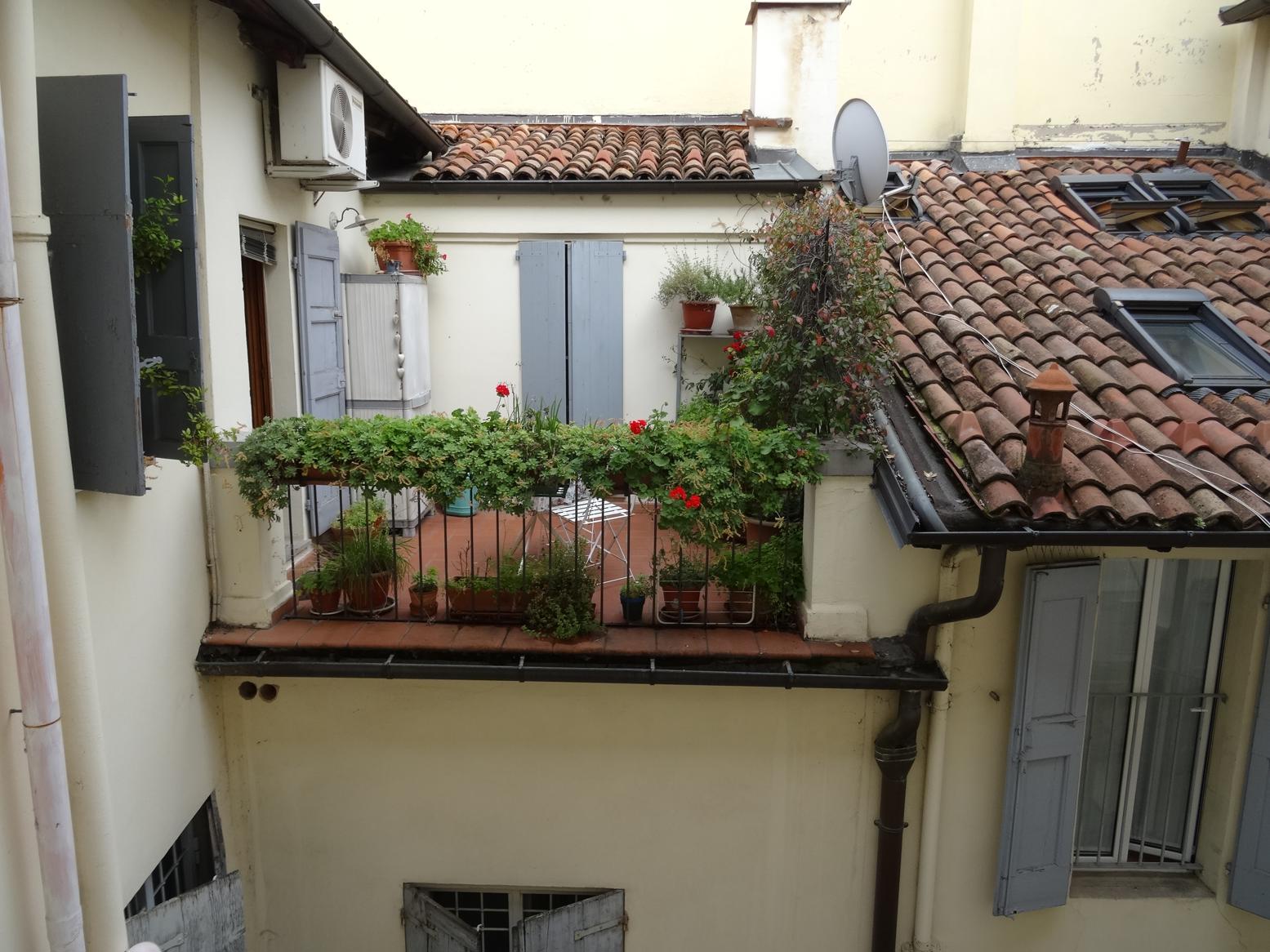
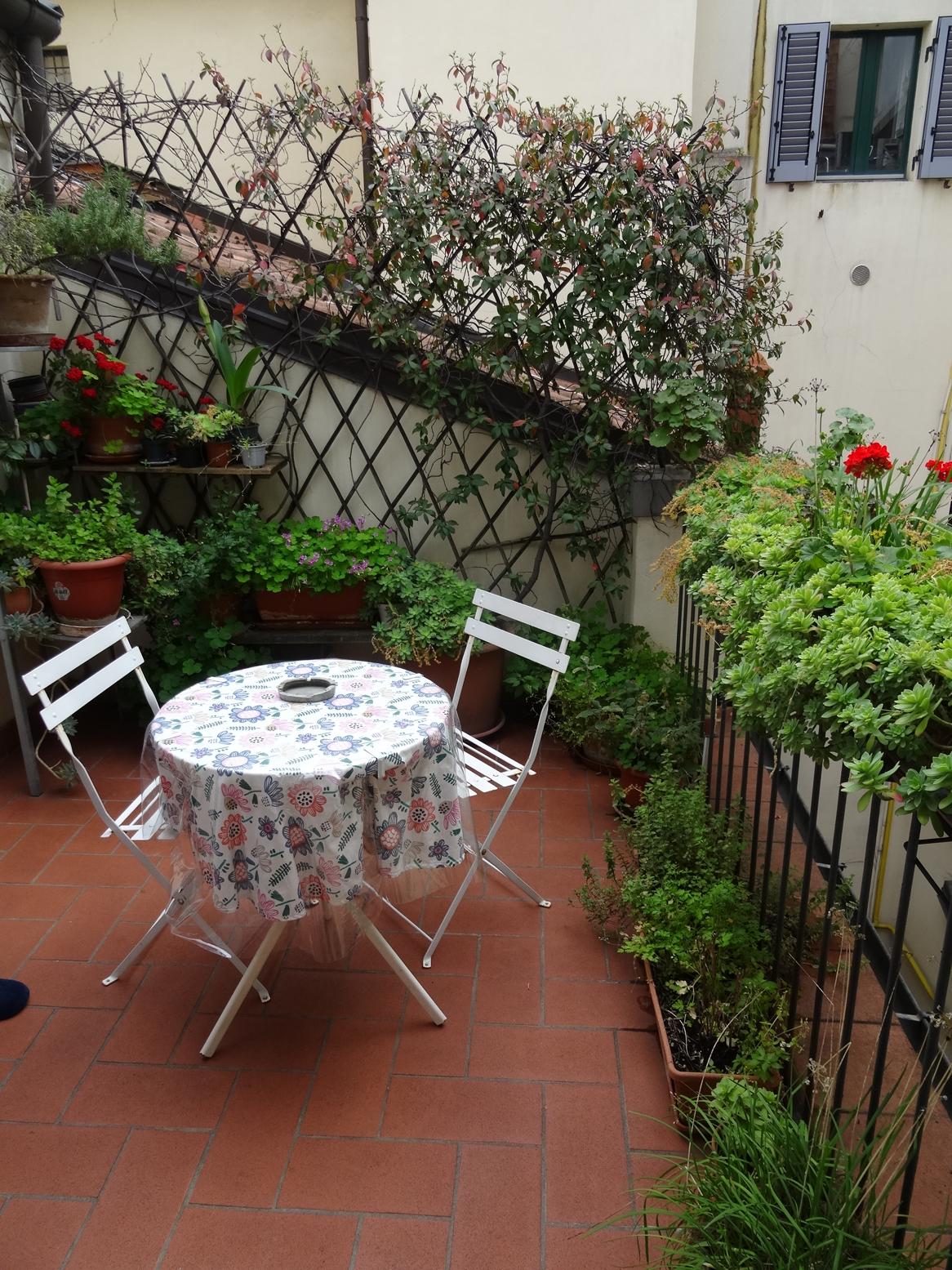
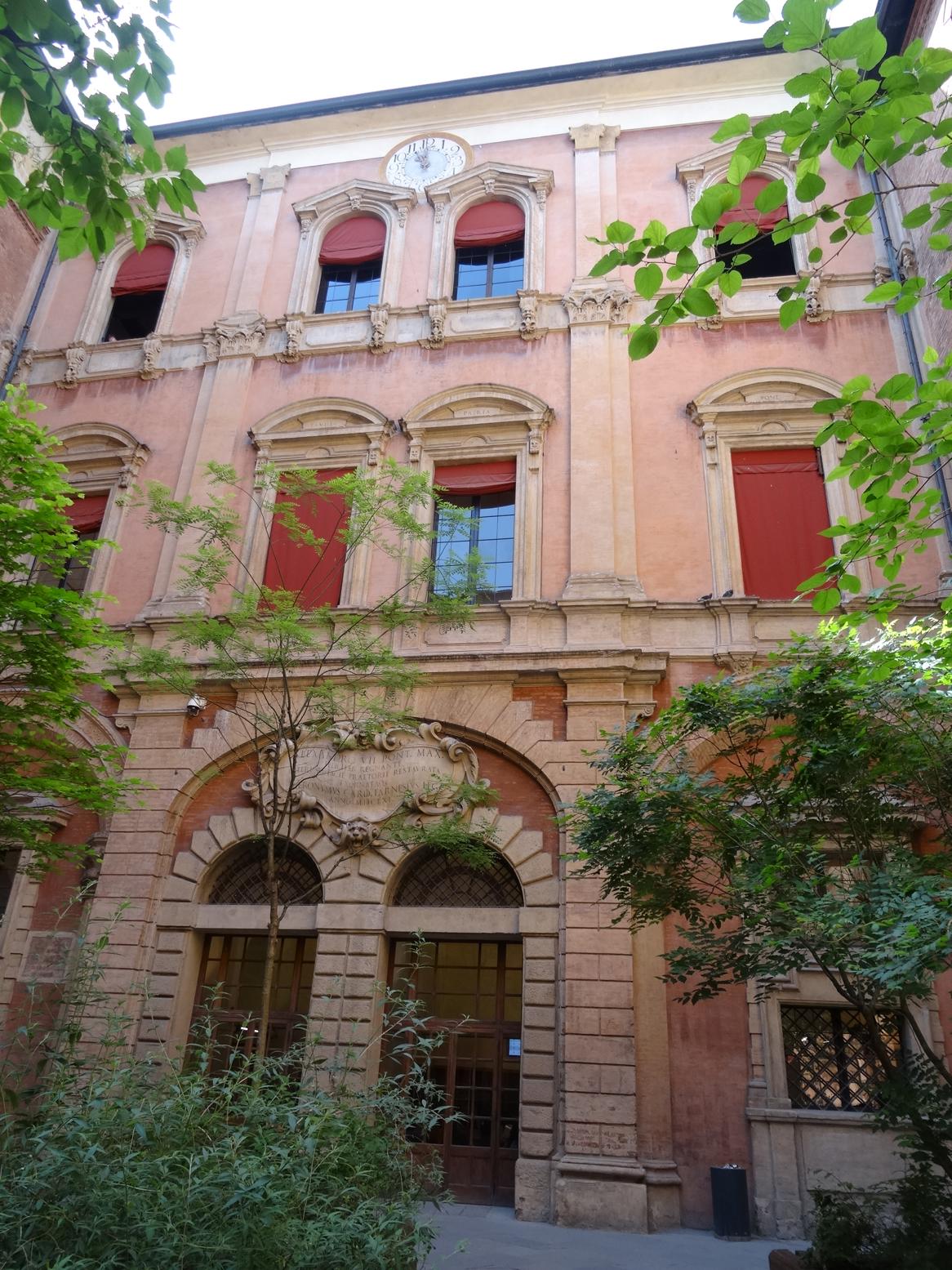
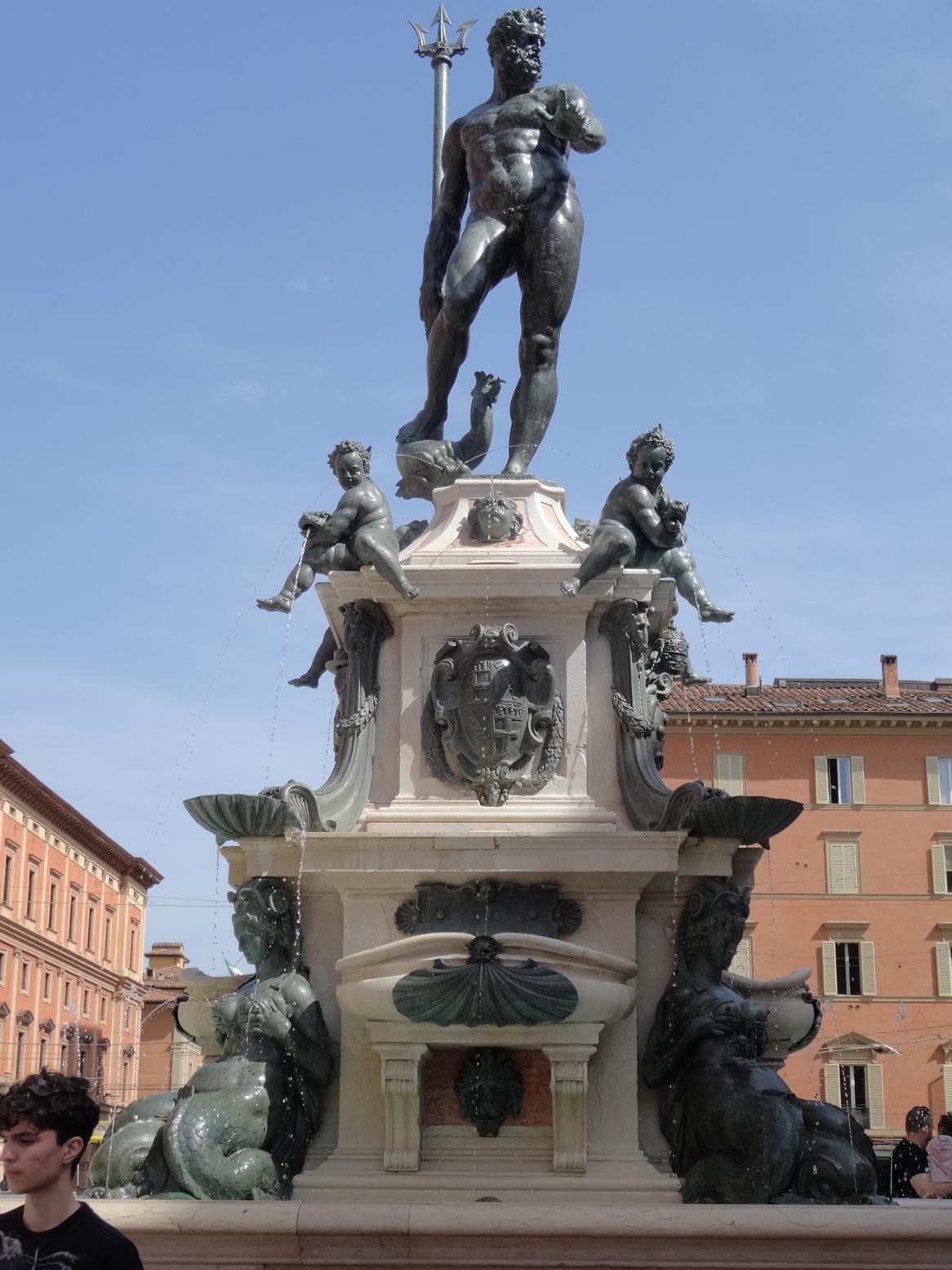
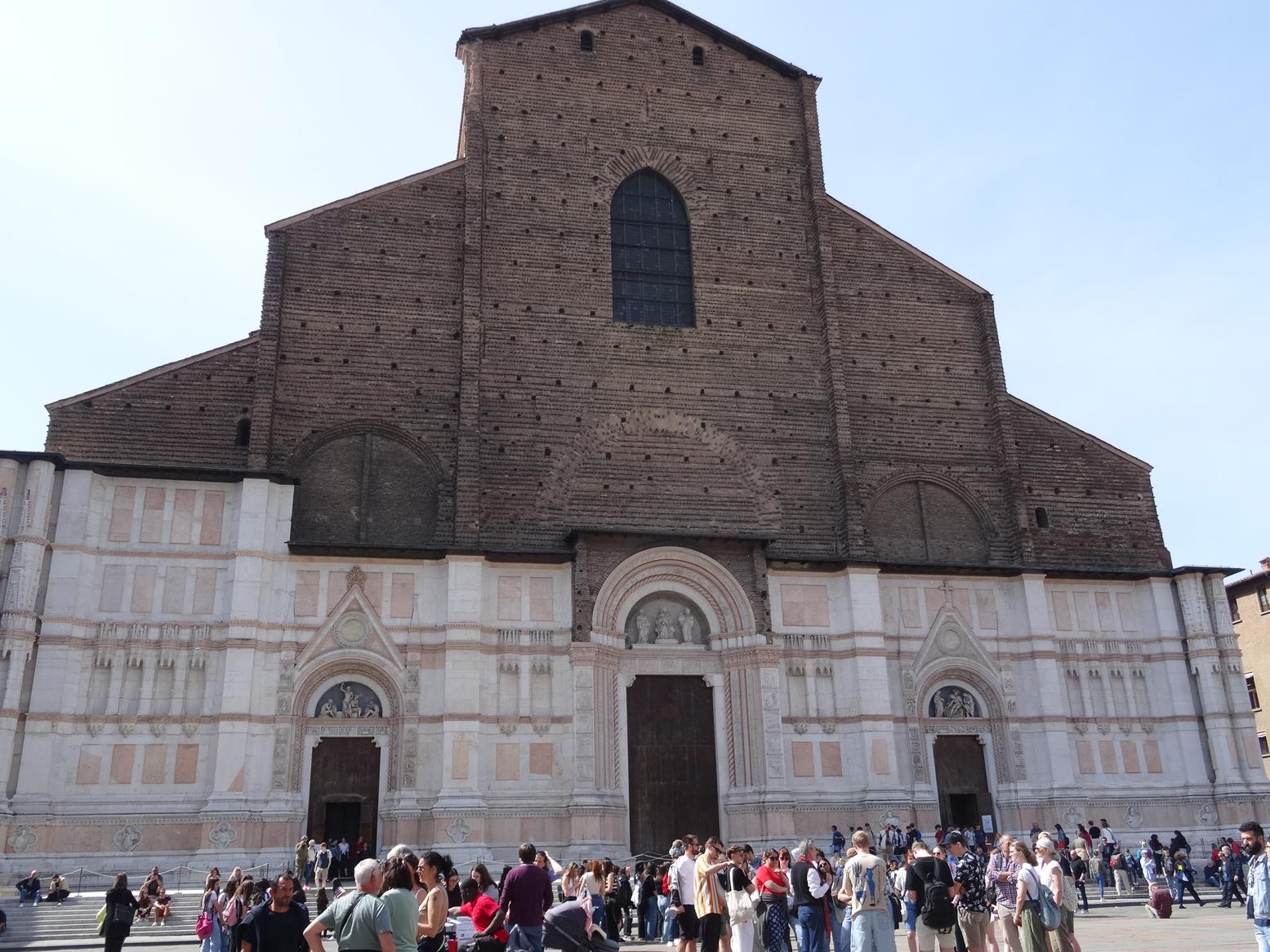
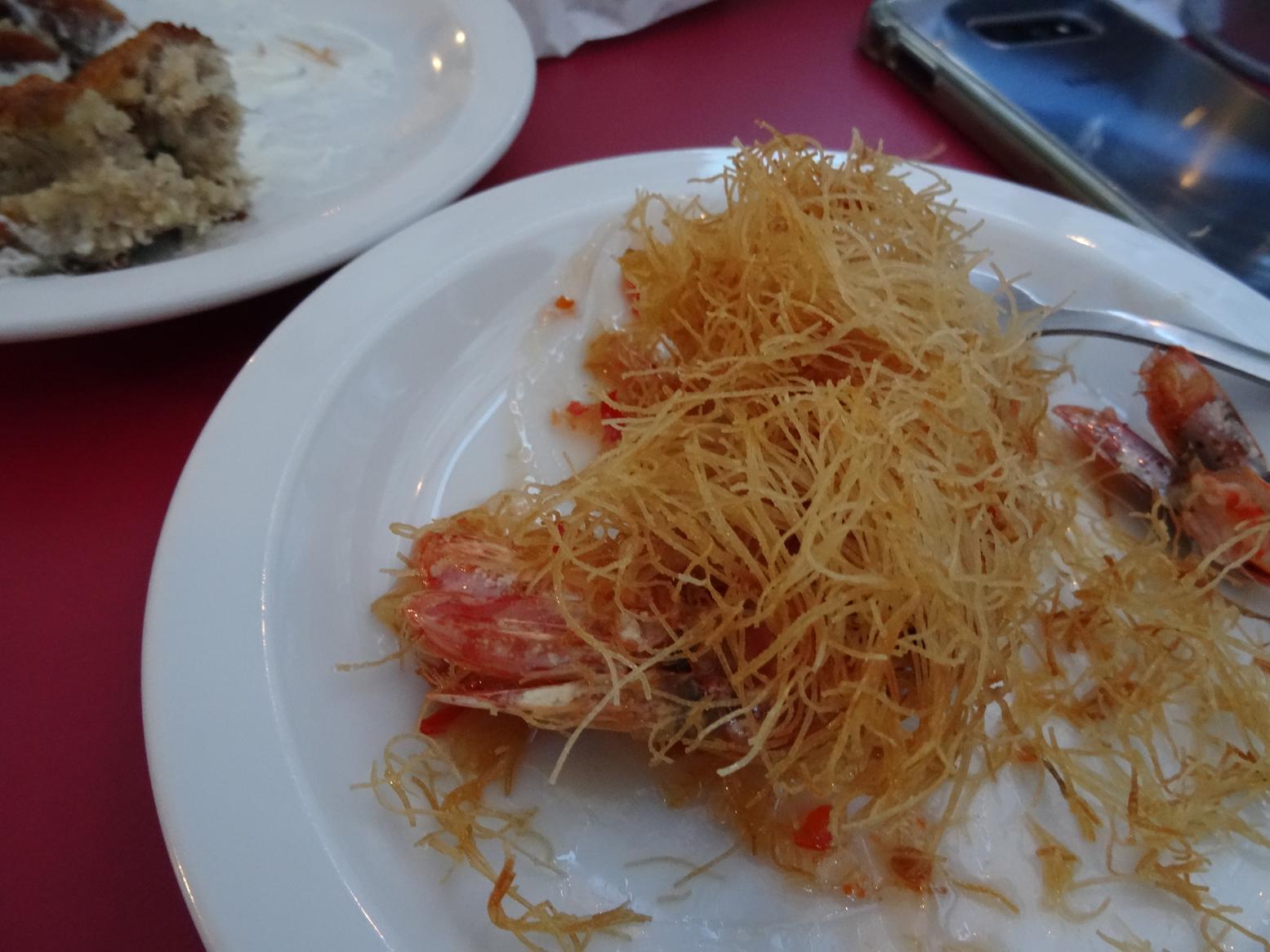
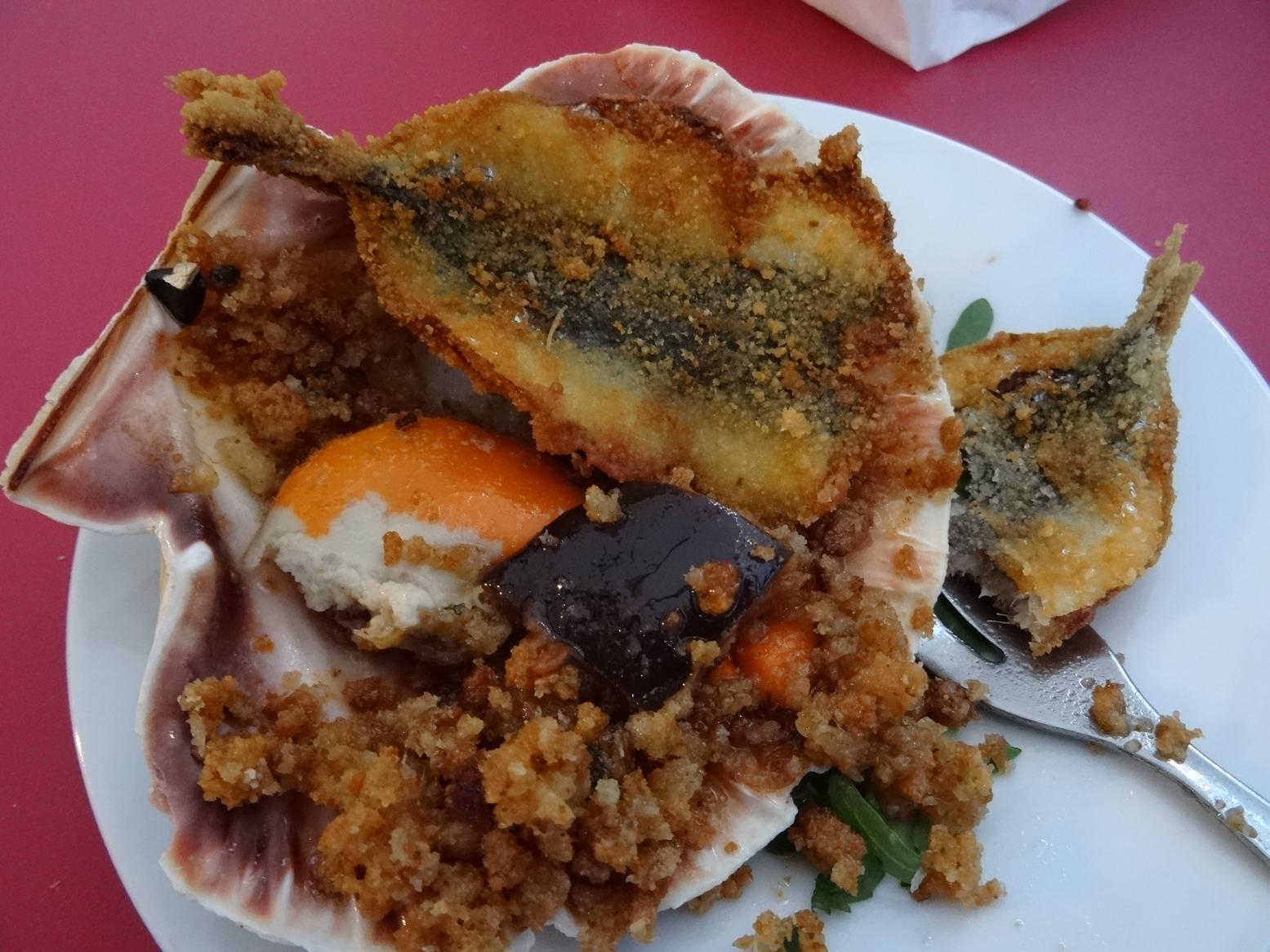
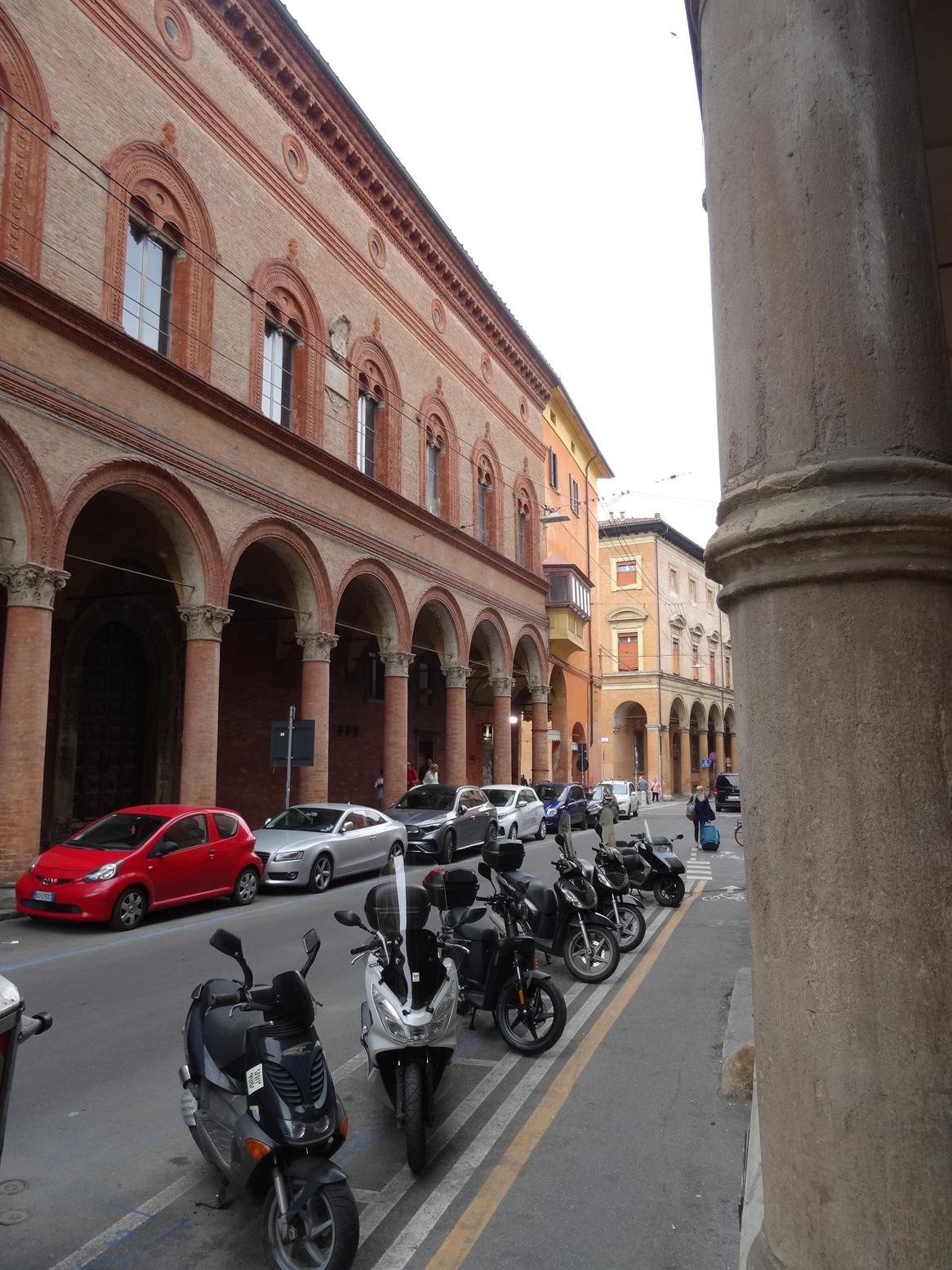
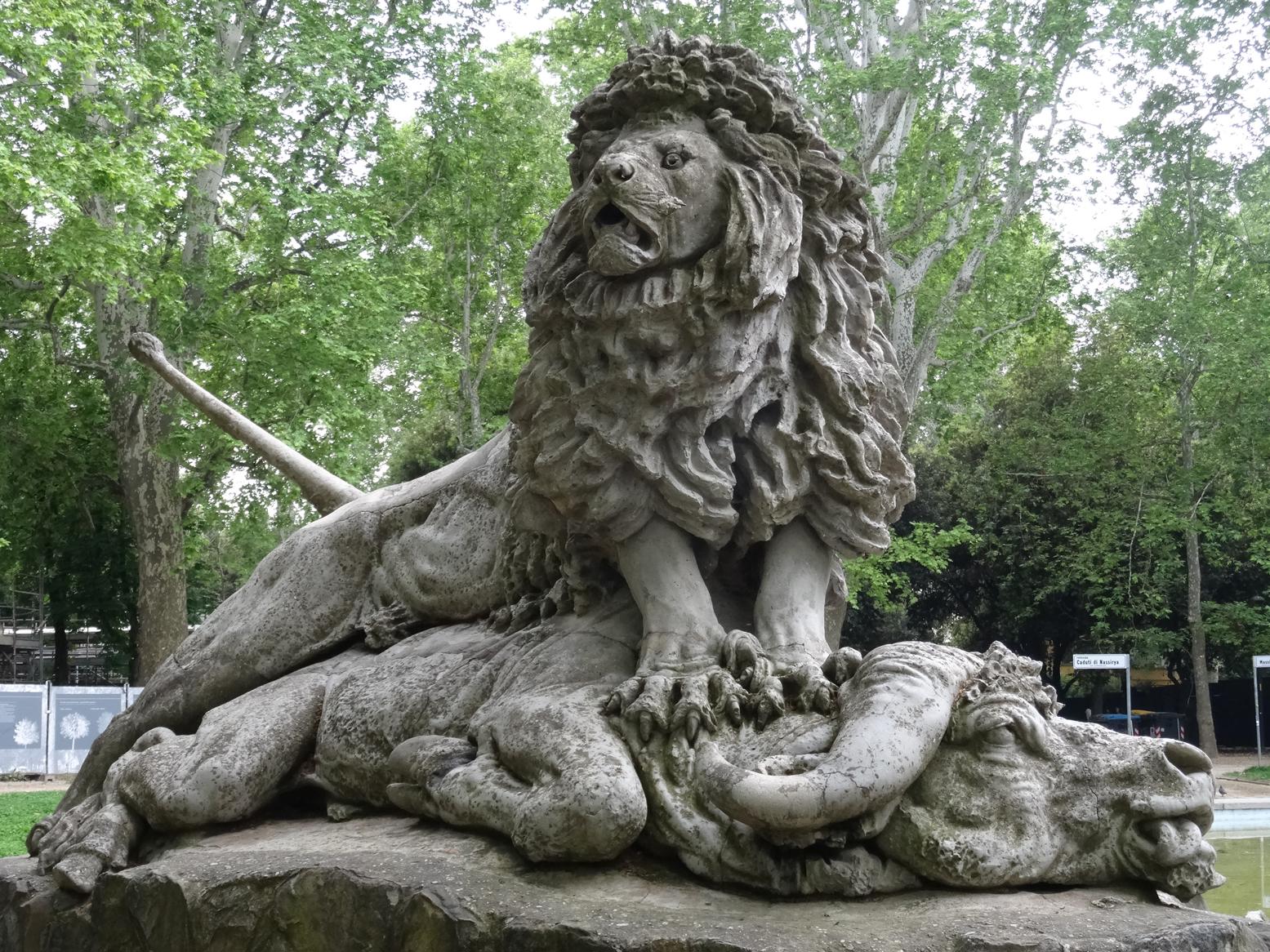
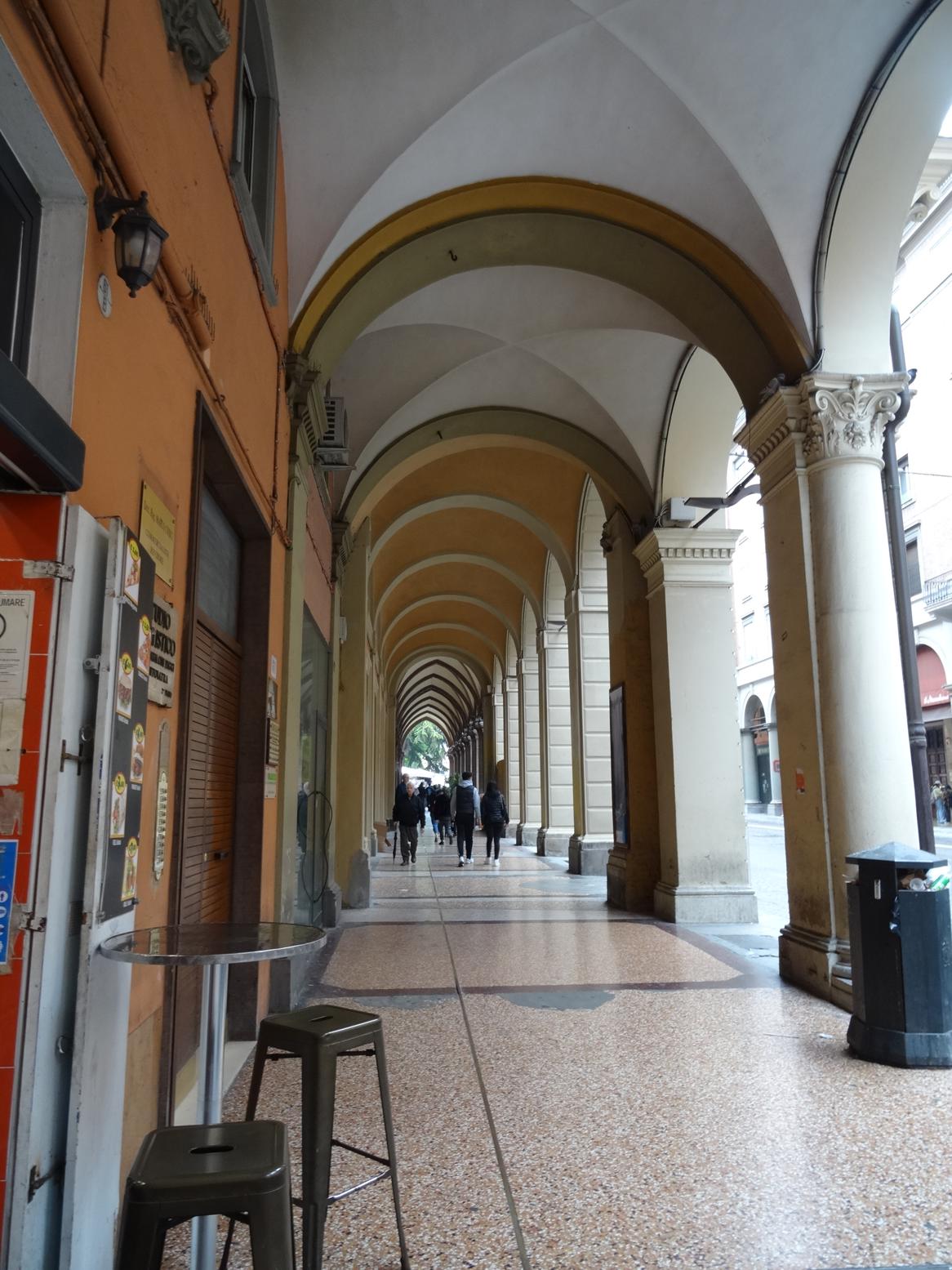
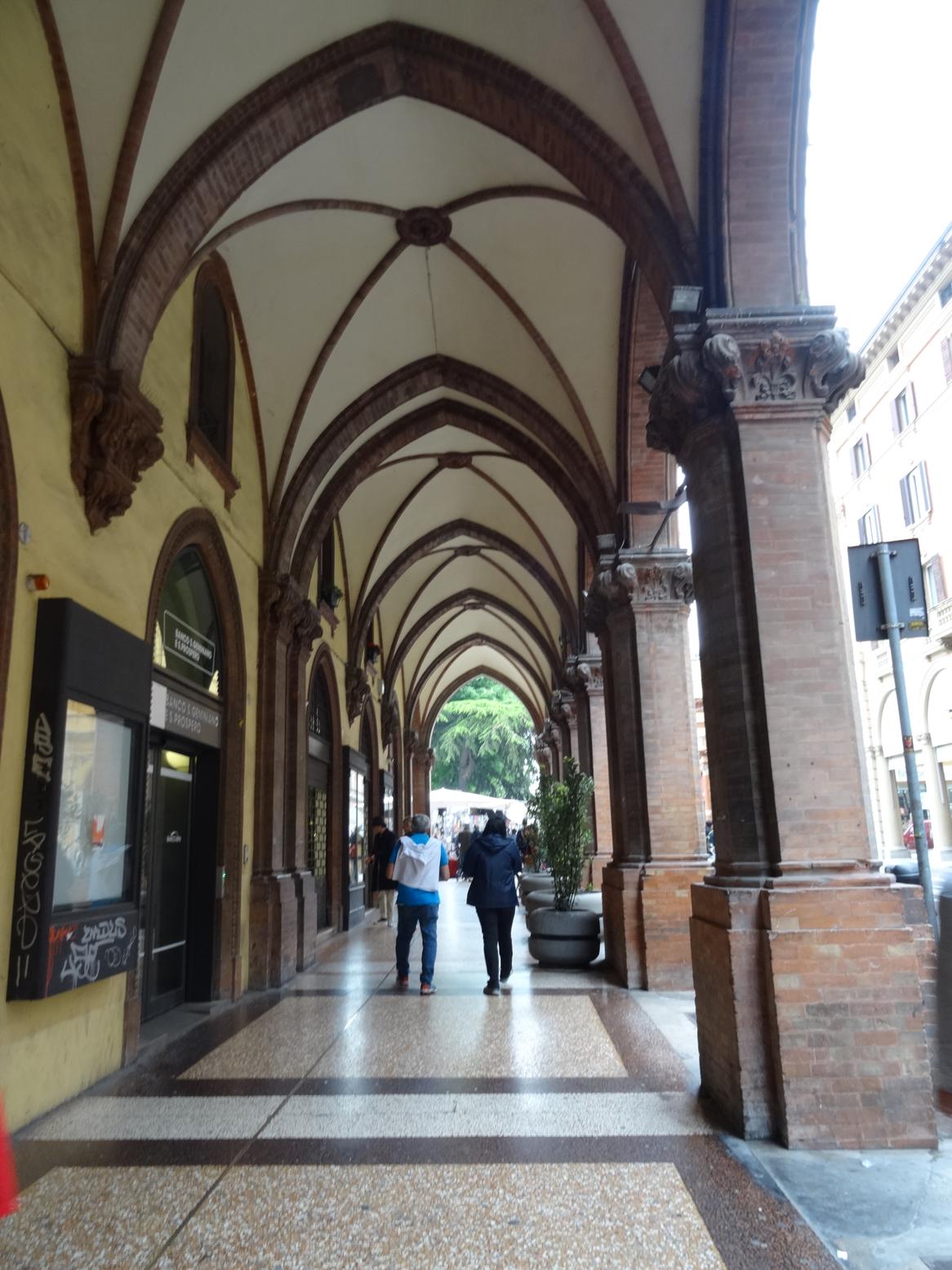
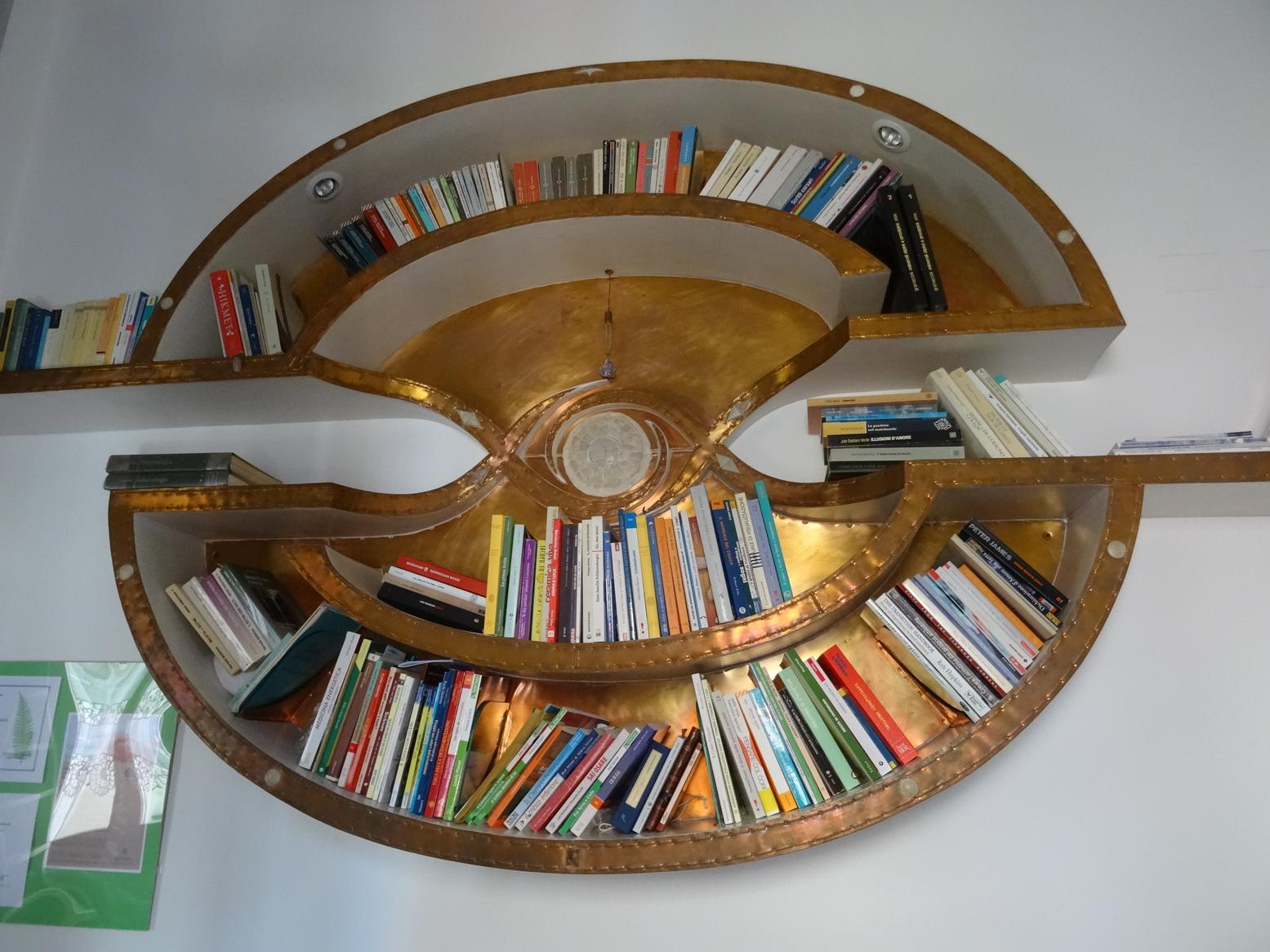
The International Museum and Library of Music was just round the corner … set in a decommissioned church with glorious acoustics and frescoes .. it houses a staggering collection of old harpsicords, spinets, pianofortes, pianos, harps, Kaliopes, wind instruments, and more. These instruments came from all over the world, and were exquisitely ornate — some dated as far back as the 1500s and all were still in playing condition. But the most captivating aspect, was a personal tour being conducted by one of their music students. She was demonstrating the finer points of each keyboard, then allowing the guest to try for himself. They were both accomplished musicians, and it was an amazing privilege to hear these ancient instruments being played as they would have been hundreds of years ago.
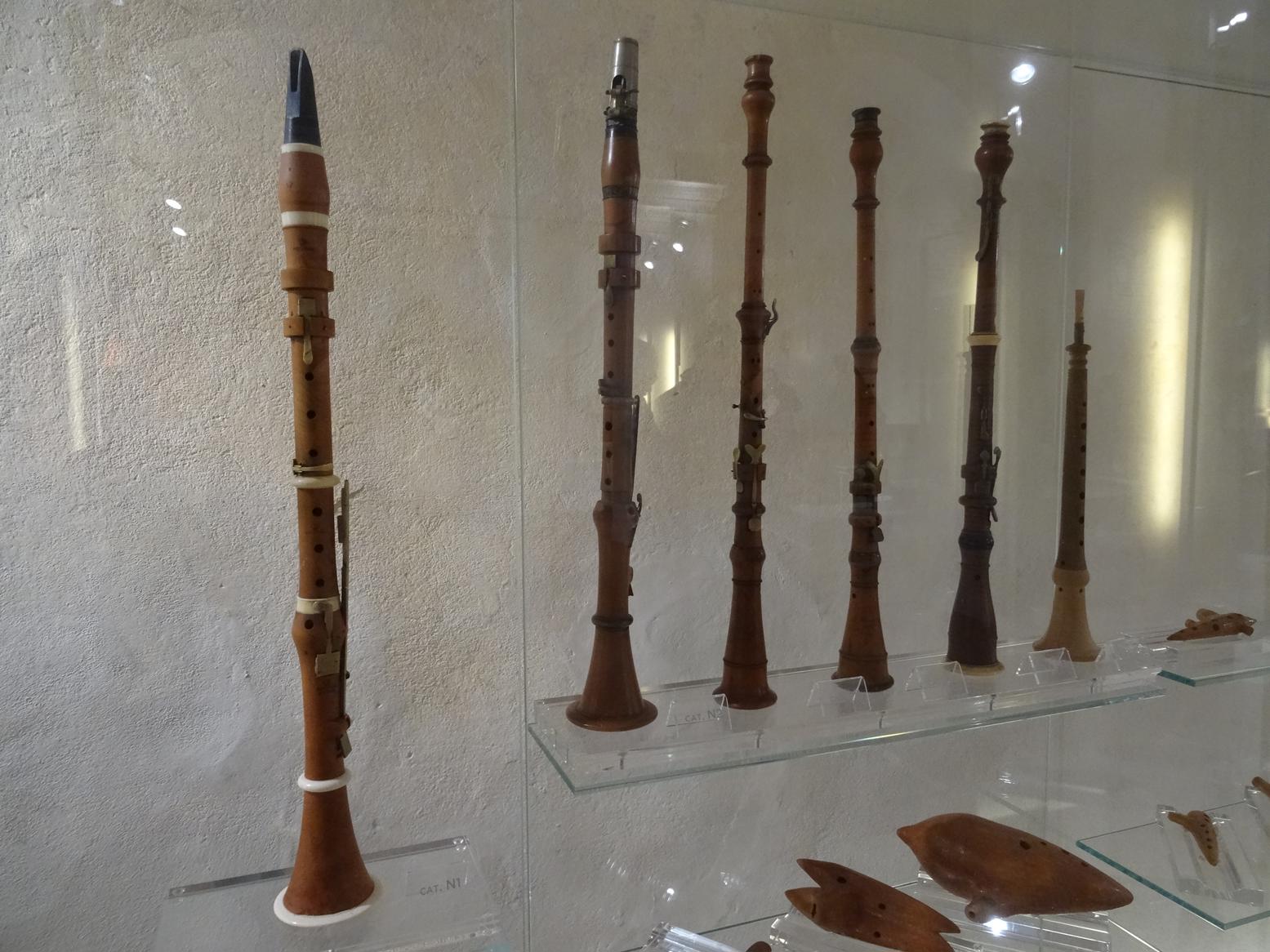
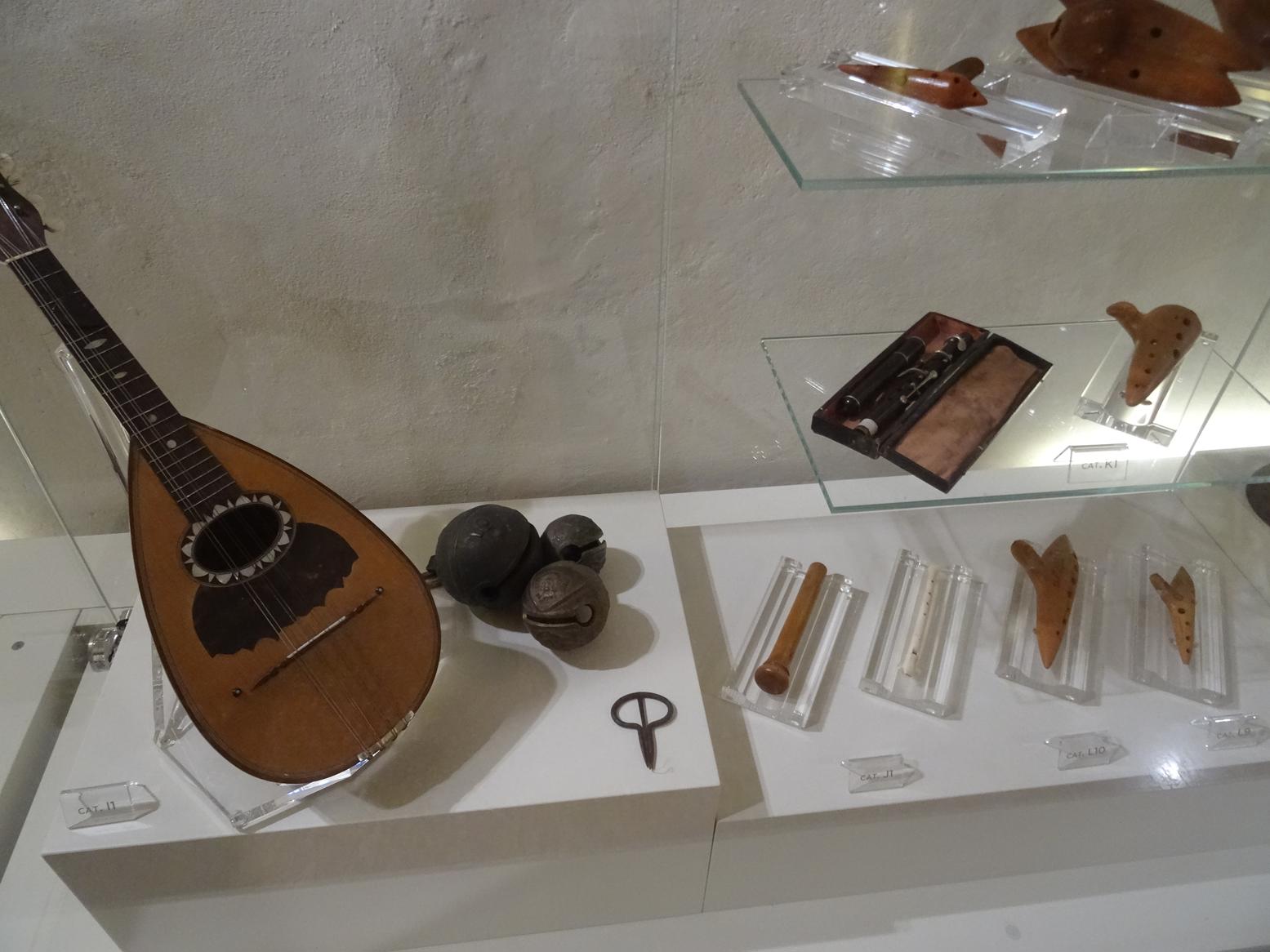
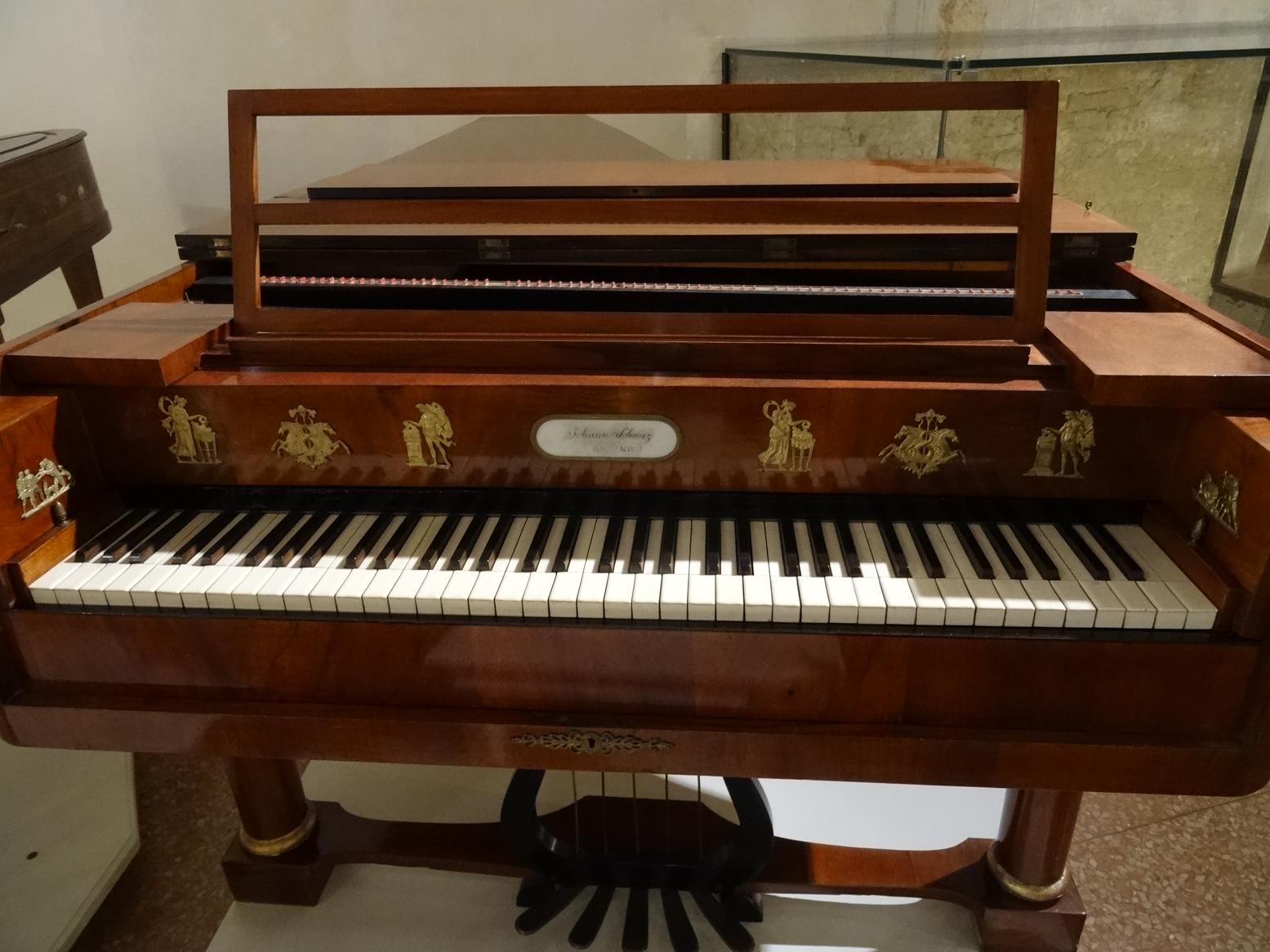
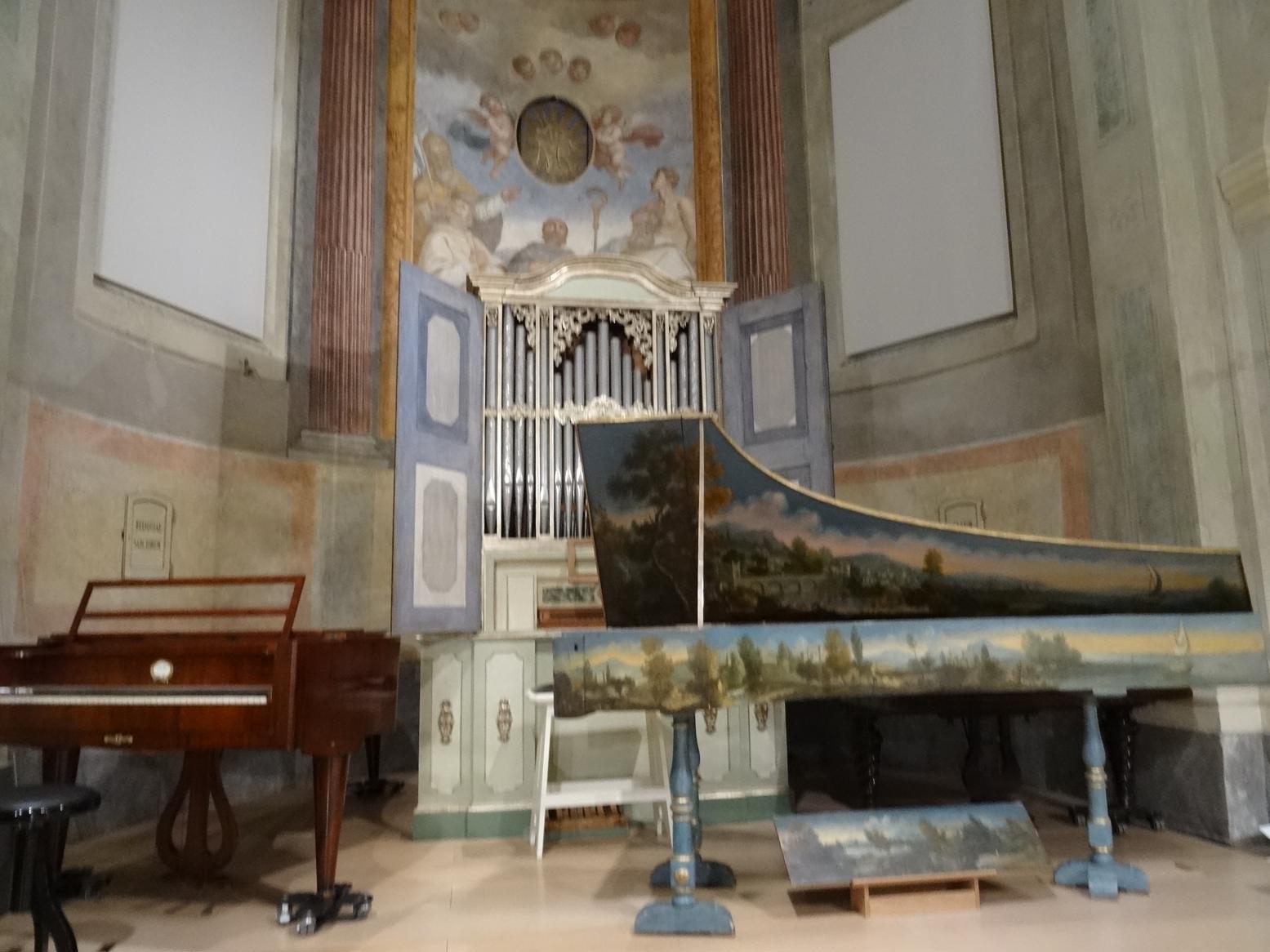
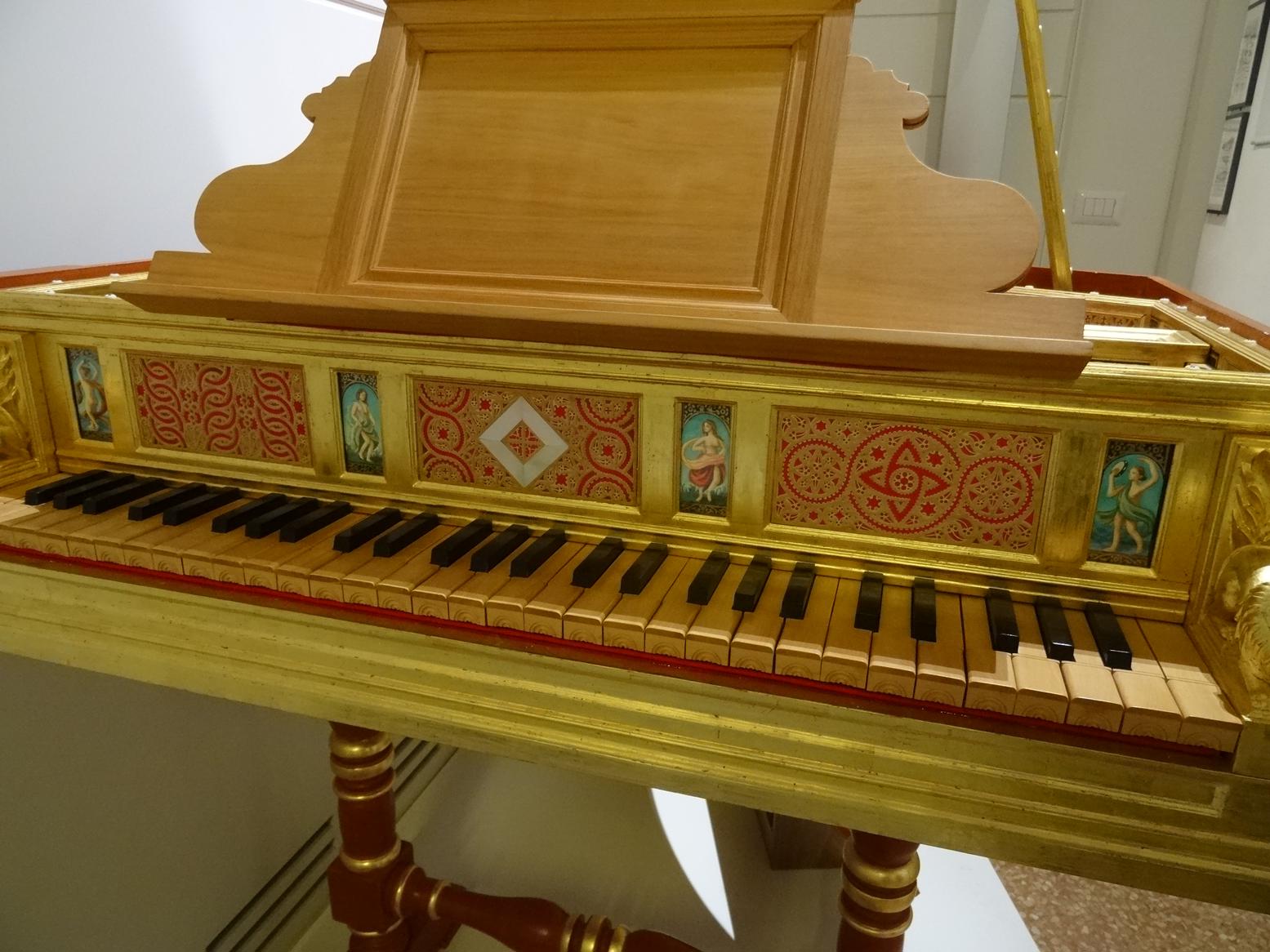
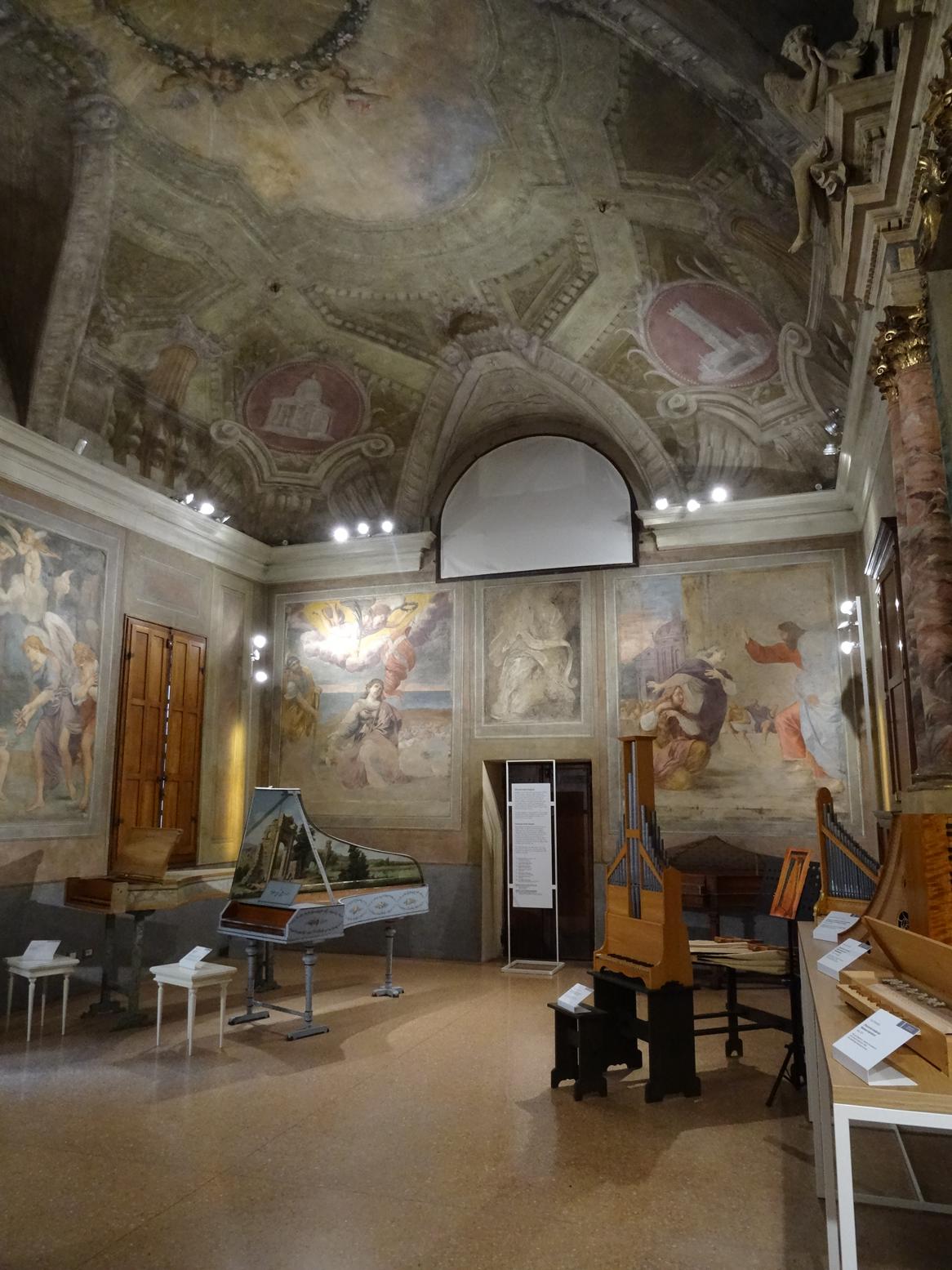
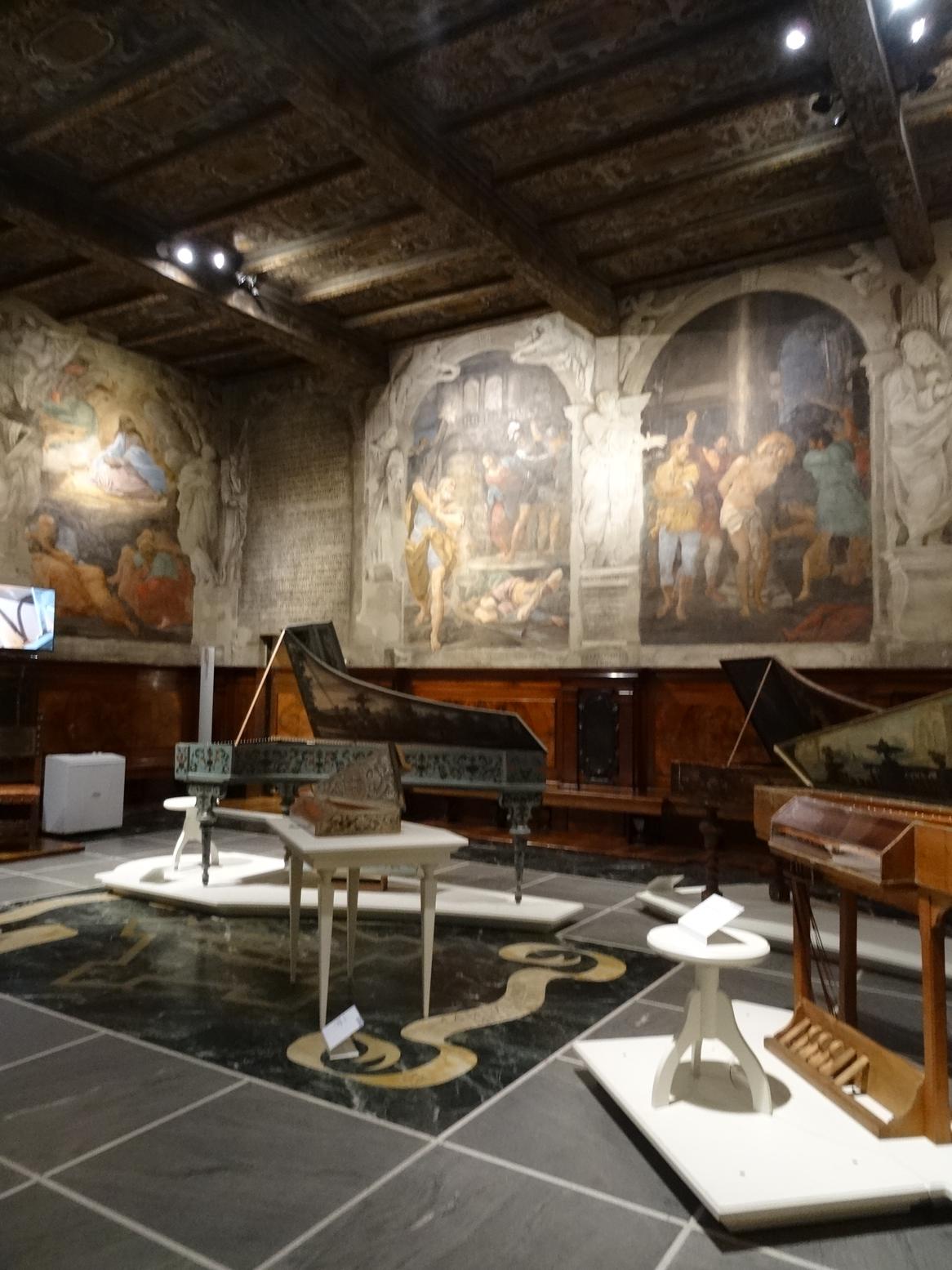
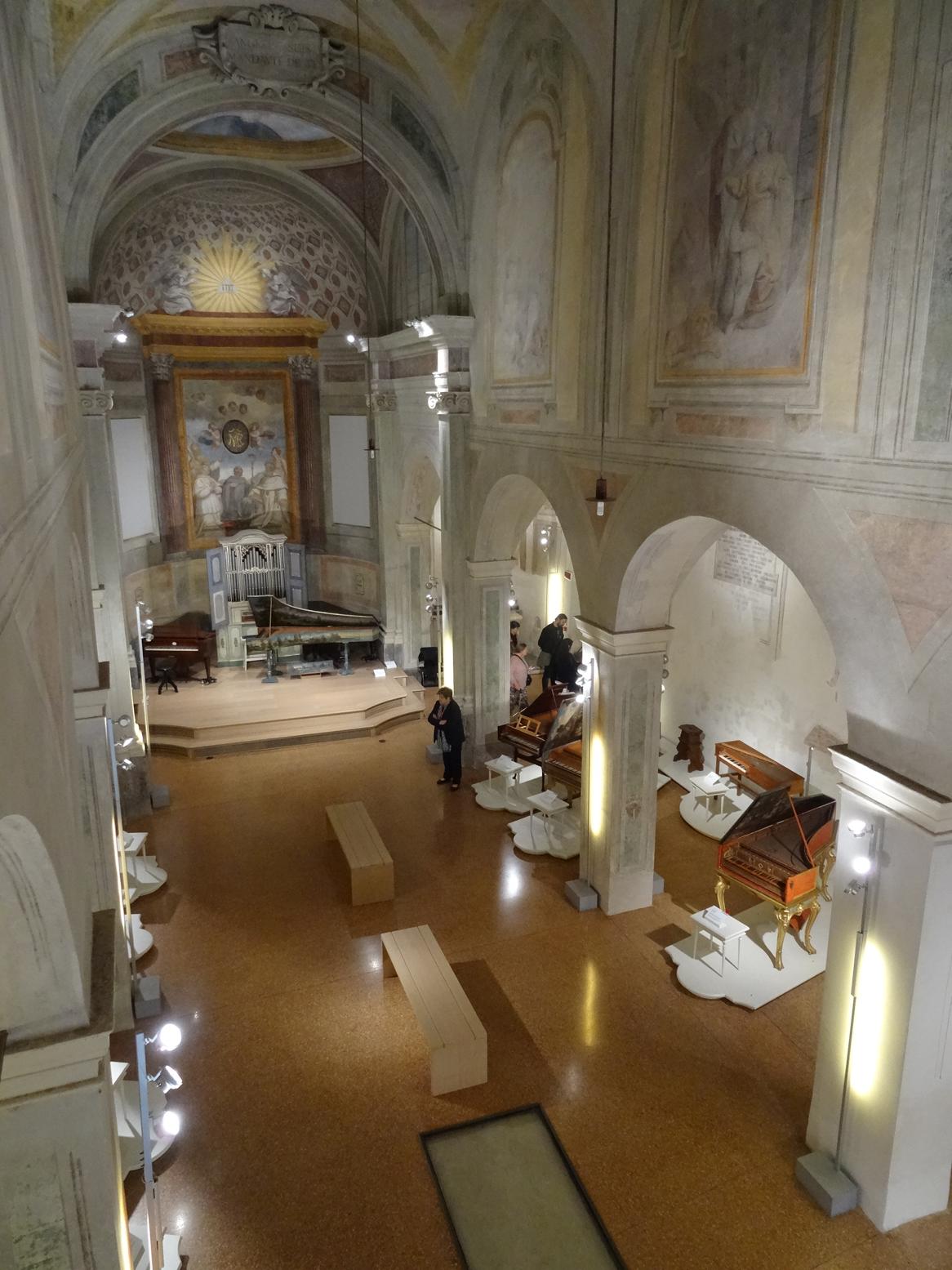
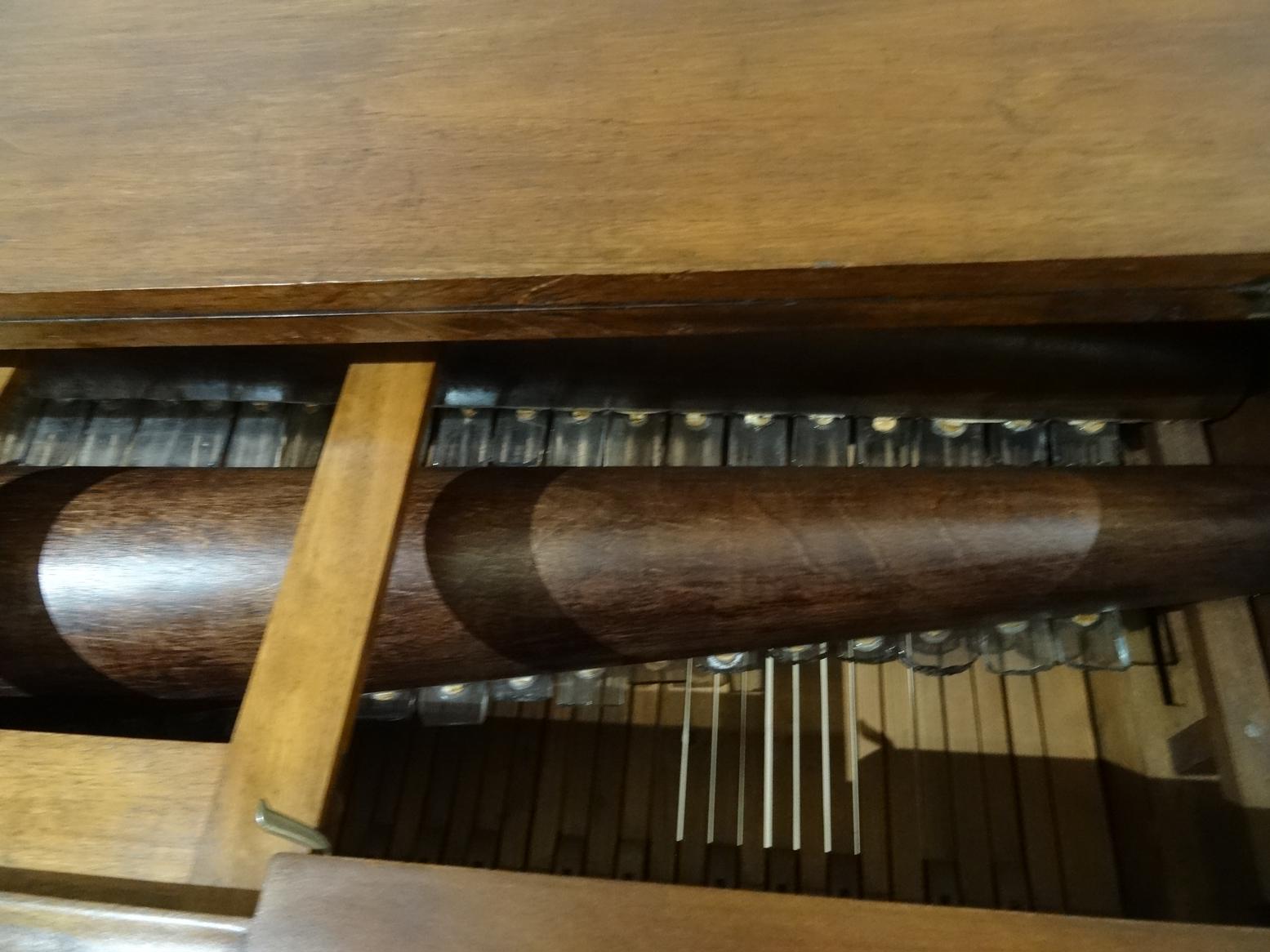
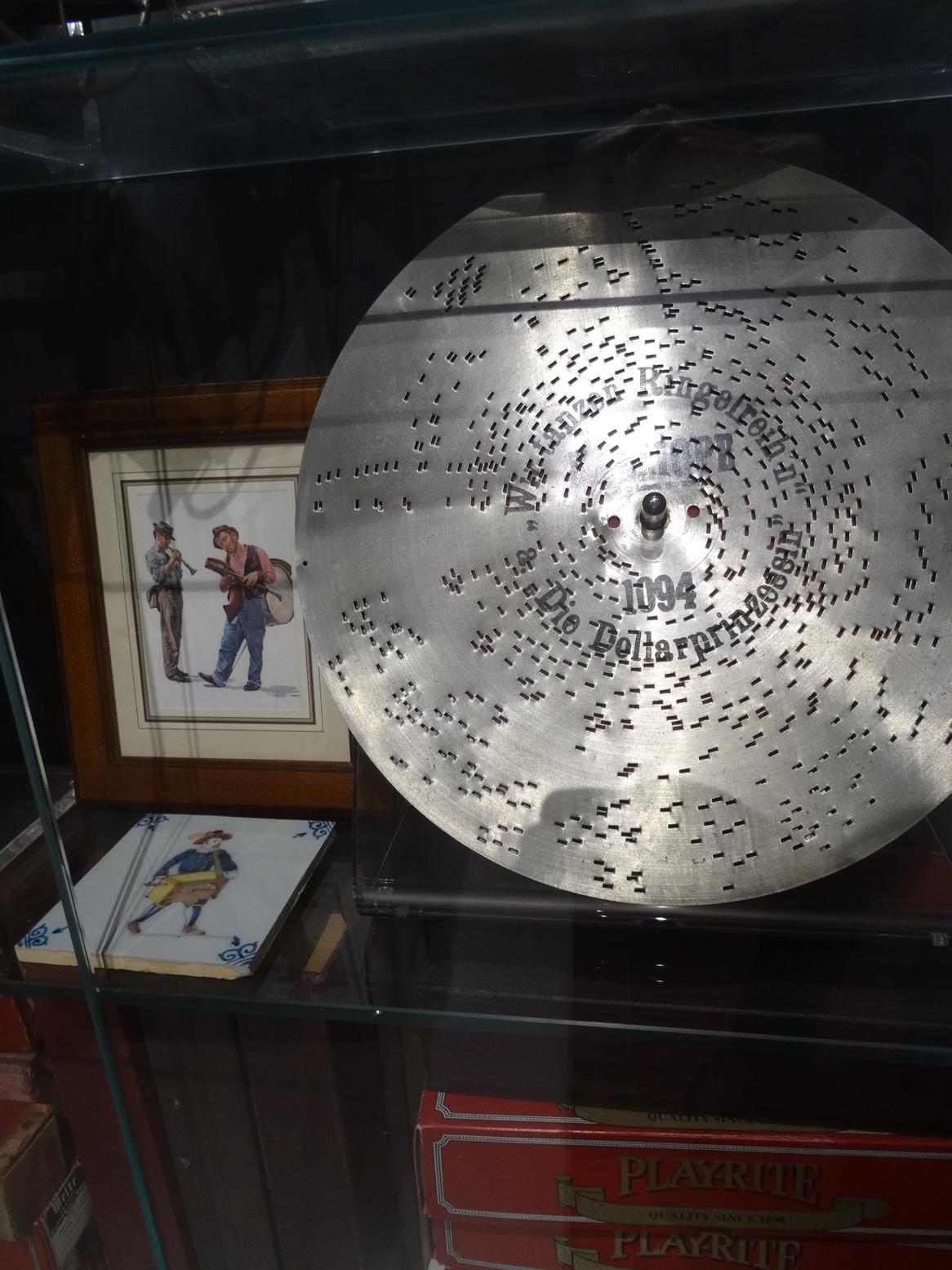
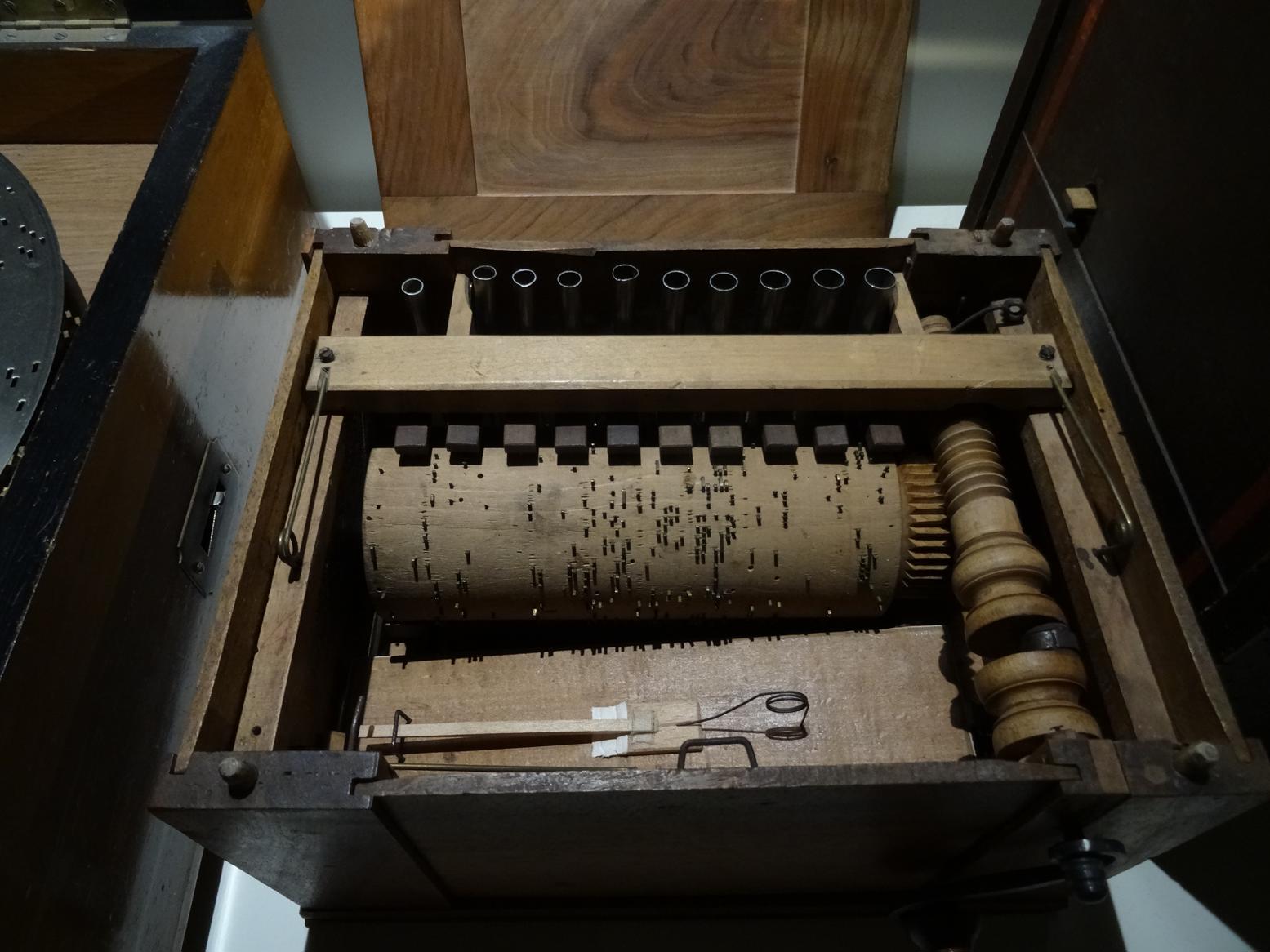
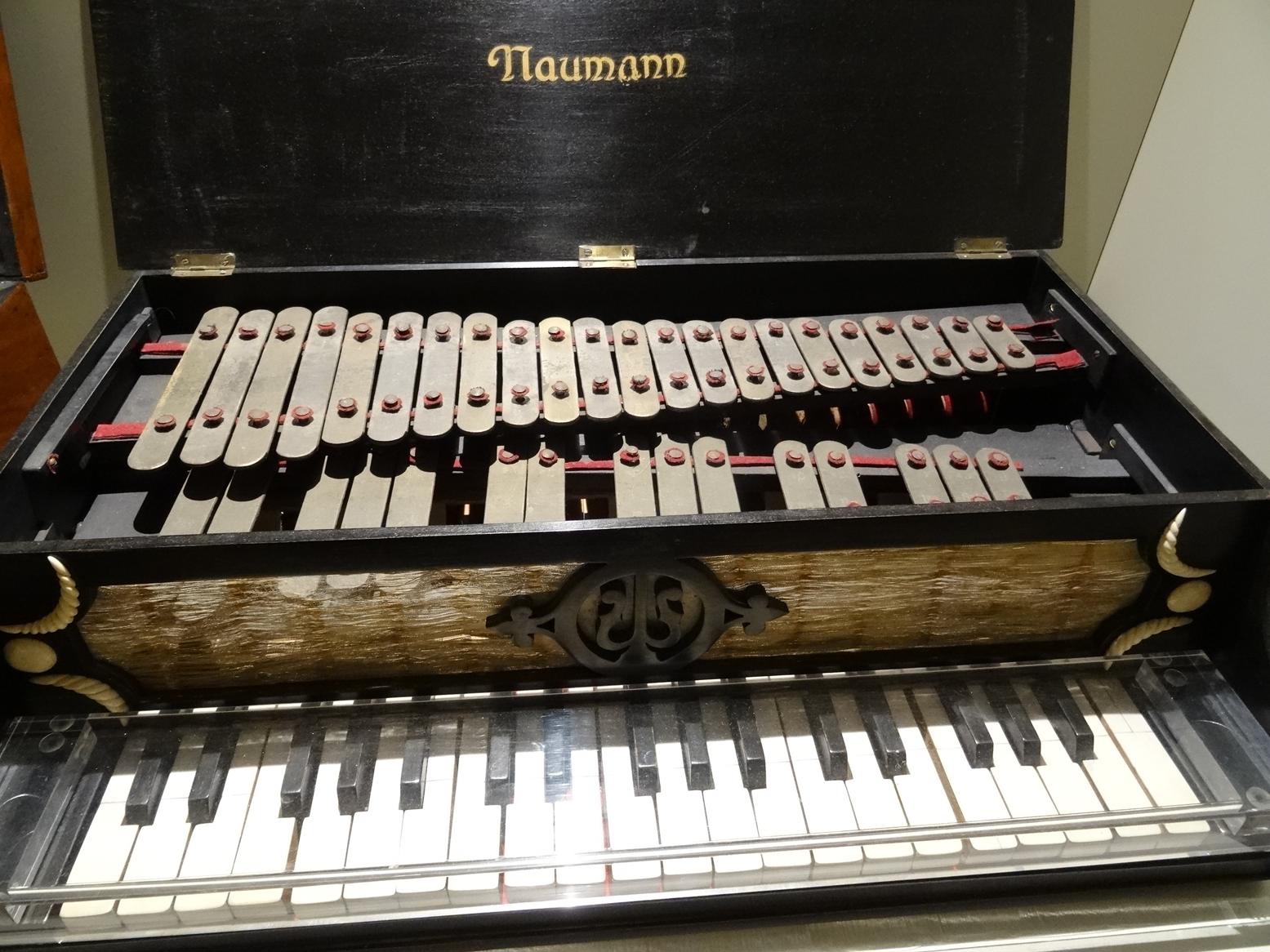
2 Comments
Tim
Fascinating….. Even the piccolo and the ocarinas look old, and are those old cowbells?
More delicious foods. Did you manage to acquire a lot of local recipes and gastonomic secrets to this type of cuisine?
Yes, the “Spag-Bol” mainstay of the UK cafe must be far removed from what you had there in Bologna. Did you encouter lots of fresh Parmiggiano/Reggiano in your culinary quests? Was it added by the cook or added afterwards as a topping?
I fully expect the Sandra Place property will be quickly under renovation, soon to emerge with numerous statues, fountains, mosaic patios, with mandolins, memorabilia, espresso machines, Placido Domingo on recerded loop, and a vast wine cellar.
Jennifer Smith
You would have enjoyed the musical instruments. There were two replica harpsicords (originals dating back to the 1500s) – the workmanship and detail were exquisite.
Lots of Parmigiano Reggiano (cow’s milk) but in many areas the cheese of preference is Pecorino (sheep milk). Lots of choice – semi ripe, slightly aged … but the best is Pecorino Reggiano … strong and delicious. Italian culinary rules dictate this is THE cheese to be used in Carbonara.
I draw the line at statuary and lions on the gate posts!!